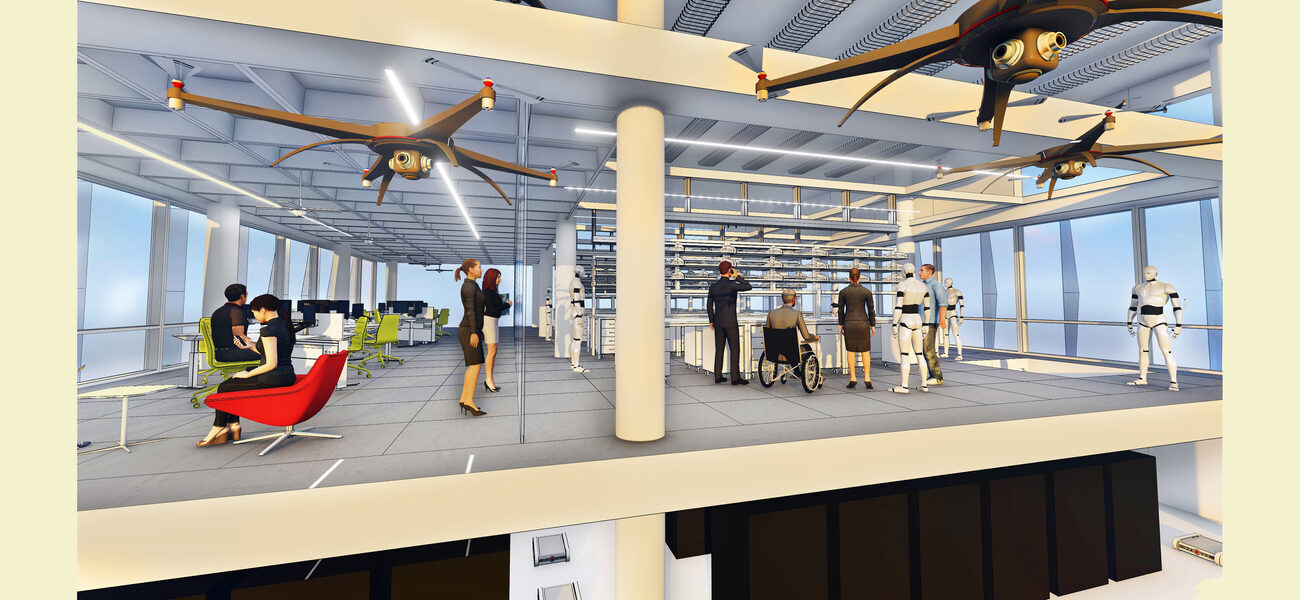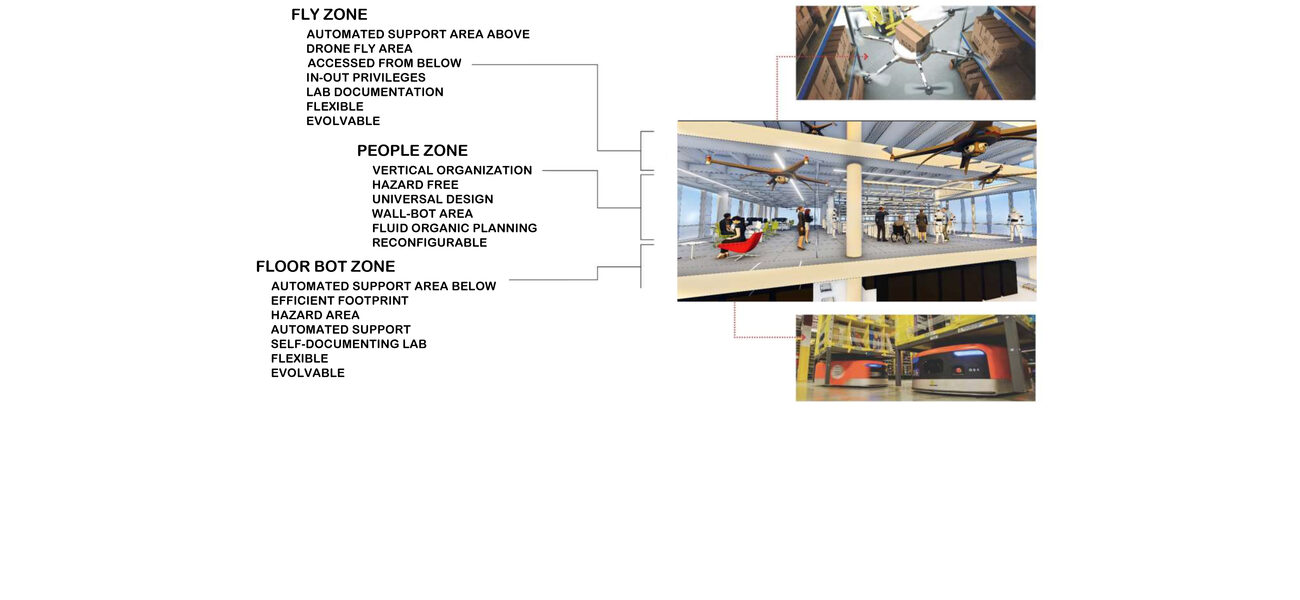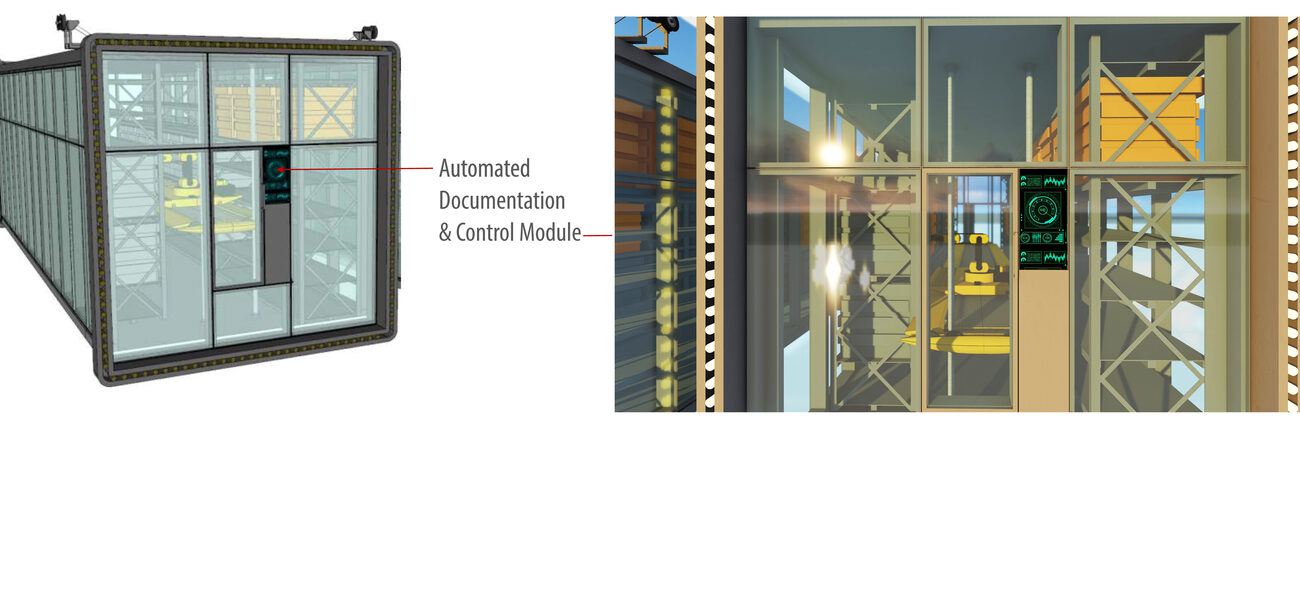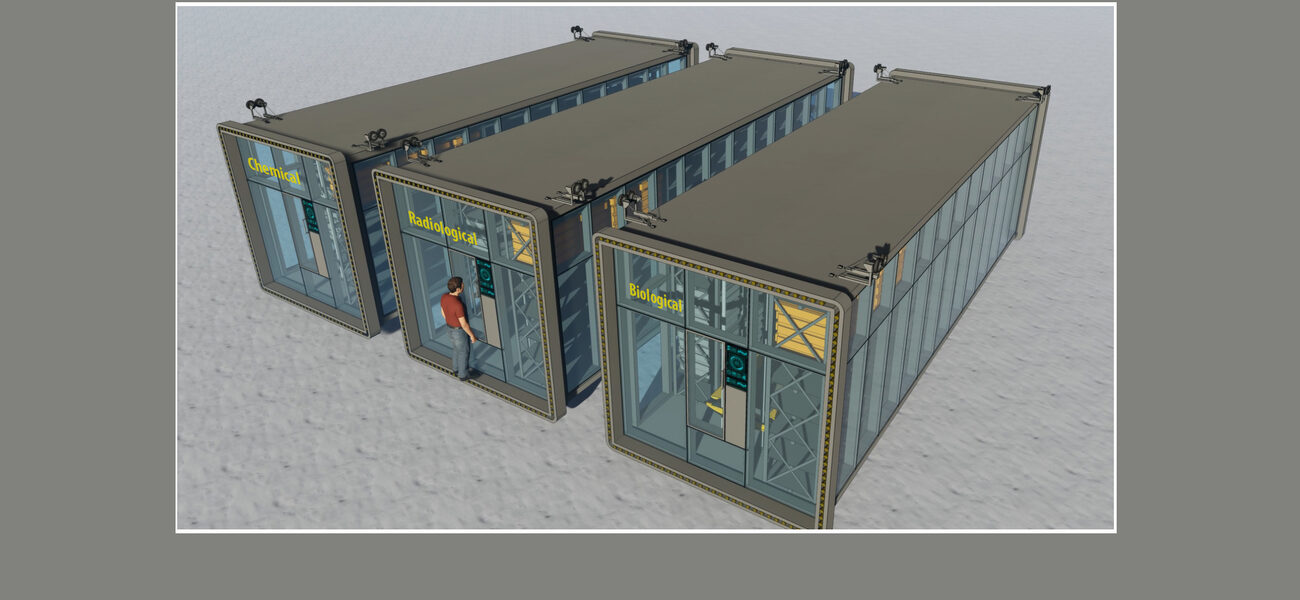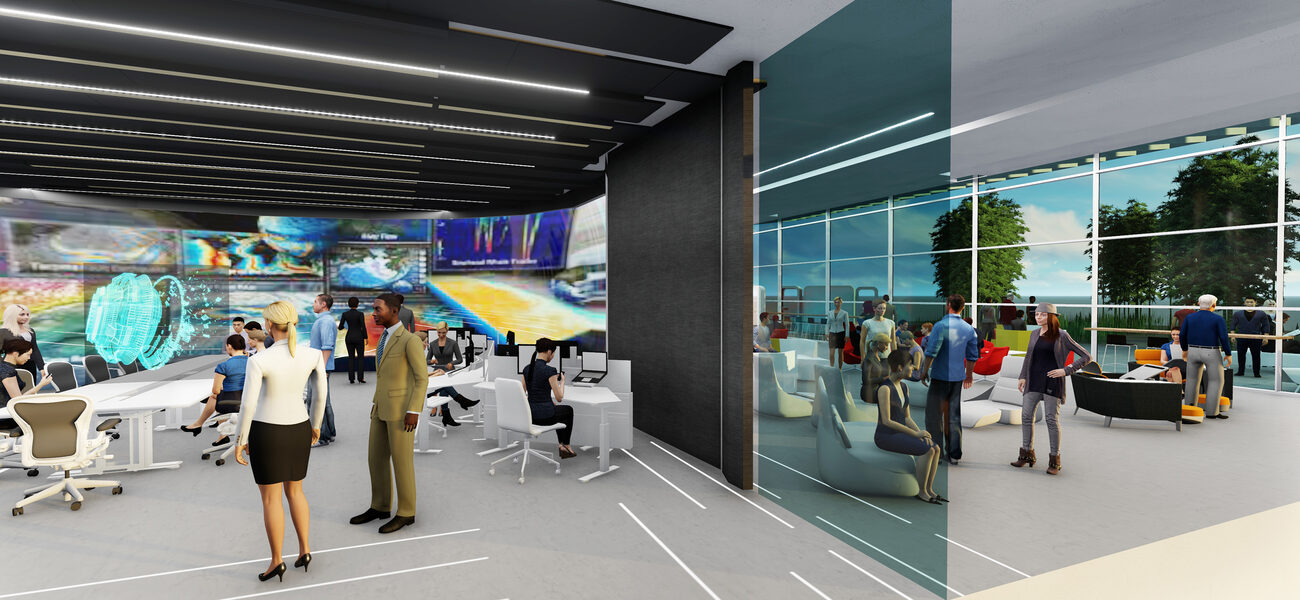Imagine a baby born today. She’s smart and science-minded. Through good luck and hard work, she earns her doctorate early, and by age 31, she is solidly embarked on a research career. What does her lab look like? That’s what two SmithGroup thought leaders—Adam Denmark, director of Laboratory Planning, and Steve Palumbo, Science and Technology Studio leader—sought to find out with their team members though a yearlong research initiative they called LAB2050. Collectively, the SmithGroup team and their client advisors defined six categories that they used to project current trends forward—technology, funding and partnerships, energy and the environment, collaboration, synergies, and planning and design—and to visualize the new ones that might emerge.
Their ongoing work involves posing some of the questions the project raises, identifying obstacles to their visions, and working with the scientific and building communities on removing those obstacles. “Our goal is not to predict the future, but explore the potential, spark a conversation around what it would take to get there, and create the platform for it to happen,” says Palumbo.
Technology
The robots are coming! At least, that’s what the LAB2050 team envisions—a widespread adoption of robotics, empowered by the rise of big data and machine learning. Automated technology will make it possible for robots to conduct more and more of the repetitive analysis of science, as analytic and diagnostic equipment becomes smaller and more mobile. Humans will still be part of the equation, of course, and scientific environments will be designed for both humans and machines to operate collaboratively.
Funding and Partnerships
As traditional funding models erode, scientific organizations are already reaching outside the normal round of sources to seek funding for their work. In the future, they will partner with unexpected industries for inspiration and resources.
“How can we reach out to non-traditional partners outside of that research arena to go after competitive funding?” asks Denmark. For instance, the film industry might provide expertise in telling stories to persuade investors, while a professional sports approach might inspire motivation and high performance among competitive teams.
Energy and Environment
Designers of labs and buildings will look to nature for inspiration, creating “biomimetic” building skins that adapt to the environment analogous to the way animals and plants do. Structures will be flexible yet sustainable. Human workspaces will include features such as natural light to keep scientists energized and resilient, while robotic environments can be made less human-friendly to save energy and space. All this will be done with as little water and waste as possible, relying on locally produced, renewable energy sources.
Denmark lays out a vision of one possible use of data and automation as applied to the built environment: “Intelligent buildings with artificial intelligence, starting to optimize the environment to minimize the energy impact. There’s no limit in ideas here for elements that you can toggle. Maybe you have an RFID tag, and everyone has an implanted microchip that activates customized spaces, lights, HVAC systems, music, and software preferences, as people move in and out of a space. It’s that next level of controllability in the systems.”
The LAB2050 team also acknowledges that the earth’s climate is changing, which means science facilities need to be resilient and, where possible, mobile.
Collaboration
Working in distributed teams is already important to many scientific endeavors. In future research environments, as Palumbo and Denmark foresee it, flexible new tools will quicken the pace of research and product development while allowing virtual experimentation. Teams no longer have to be physically in the same place to work productively together, which expands the possibilities for their spaces.
“My kids’ generation, the next generation, are natives to this collaborative environment,” says Palumbo. “This is how they work. Their lives have only been about collaboration. They are going to expect that and need that in their buildings.”
Synergies
While collaboration is an intentional act of working together, synergy happens when disparate disciplines work together on thematically related investigations, and the product becomes greater than the sum of its constituent parts. Leveraging shared expertise improves speed to market. For instance, the International Space Station combines the experience of more than 90 nations towards collective investment and accelerated discovery.
“Synergistic alliances are going to lead to value-added outcomes,” explains Denmark. “Big science and big data converge. That is not necessarily a new thing. But interestingly, you can think about a time where artificial intelligence now starts to be viewed as a partner in that research enterprise and actually brings research ideas and thoughts to humans as research partners rather than just being tools that are used to generate data.”
Planning and Design
Historically, the lab has been a fairly fixed space. What if it weren’t? What if it could adjust its environment to human or robotic occupants? What if it could move around the globe to wherever conditions are best for its work? What if the systems that build labs were intelligent, too, and could respond to the next scientific need?
Denmark cites one prediction that the world in 2050 will contain 9 billion humans—and 2 billion human-like robots. “There is going to be a very different workforce, and the person working next to us 30 years from now might not even be human,” he says.
Pulling It All Together
Together, these factors add up to the need for agile, automated, intelligent spaces, designed for efficiency and resiliency. Centralized labs will be reserved for animal models and behavioral research. For other forms of research, data acquisition and analysis can take place far away from the scientists who use the information. Hazardous environments can be kept physically apart from more office-like spaces.
One way to accomplish this might be “pods”—modular lab spaces that could be configured flexibly and even stacked to create buildings of whatever size is needed. Automated technology spaces need not include the amenities of human-centered areas, which can be configured for maximum cognition and effectiveness, with “flyover zones” above for drone deliveries.
Communities and neighborhoods can become centers of innovation, taking advantage of driverless vehicles to enable productive commute times, while cities focus on making scientific synergies possible. As people come to rely less on cars and, perhaps, more on airborne or public-transit options, cities can reclaim space for bicycles, pedestrians, and quality-of-life services. Data centers might move below ground, or underground space could become connected walkways to allow access between related buildings no matter the weather.
Where Are We Now?
If you’re not ready to welcome drones to the office or rely on a robot as your lab partner, that’s fine—there’s plenty of time. Many of these concepts are not yet realized, but have their basis in existing technology, for example:
- Barcelona has in recent years pinned its hopes for the future on science and innovation, working to attract and cluster education, research, startups, and local services, and support them with public transit.
- The Wyss Institute for Biologically Inspired Engineering at Harvard is currently researching a number of areas related to the intersection of nature and scientific applications, such as flexible sensors embedded in skin-like membranes.
- View dynamic glass systems currently in use on buildings can change their opacity depending how bright the sun is.
- Prefabricated parts of building systems are one step toward modular lab “pods.”
Denmark and Palumbo say one of the biggest goals of the LAB2050 research initiative was not to seek answers, but to ask questions and spark a dialogue. SmithGroup has been conducting a series of client think tanks with MIT, NASA, Stanford, and others to explore those questions and address the obstacles to improvements in efficiency, sustainability, and other forward-looking factors. Those obstacles include building codes, recyclability of materials, and of course, costs and funding.
Still, they’re optimistic. “I think one outcome is the further empowerment of the citizen scientist who can be doing whatever kind of research wherever they may be out in the middle of nowhere, but now you have access to this whole vast enterprise of resources that would be beyond what you could even hope for or imagine today,” says Denmark.
By Patricia Washburn
| Organization | Project Role |
|---|---|
|
SmithGroup
|
Researcher
|
